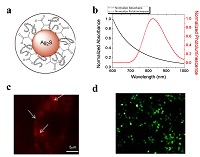
Fatma Demir Duman
Koc University, Turkey
Title: Development of cationic Ag2S NIR emitting QD’s as new generation of theranostic nanoparticles
Biography
Biography: Fatma Demir Duman
Abstract
Quantum dots are semiconducting nanocrystals with diameters between 2-10 nanometers. Strong signal brightness, resistance to photo bleaching, size-tunable emission and large absorption coefficient across a wide spectral range make them powerful agent against conventional organic fluorescence dyes used in bioimaging applications. In addition to their optical imaging ability, quantum dots have multifunctional properties such as functionalization with targeting ligands for site specific delivery and loading with therapeutic drugs, peptides or oligonucleotides for drug and gene delivery applications thanks to their high surface to volume ratio. However, most of the synthesized QD’s emit in the visible region and they contain heavy metals such as Cd, Pb or Hg, which have intrinsic toxicity to living organisms. Ag2S QDs developed in recent years are of great interest with their excellent biocompatibility and strong emission intensity in near infrared region (NIR) of optical spectrum, offering higher photon penetration depth, lower absorption and scattering of light by cellular components and lower auto-fluorescence in the living tissue compared to visible region. Yet, the Ag2S compositions reported are still limited to anionic and PEGylated ones. We have focused on the development of first cationic Ag2S QDs for combined action of optical imaging and gene therapy. Here, we will discuss the synthesis of


